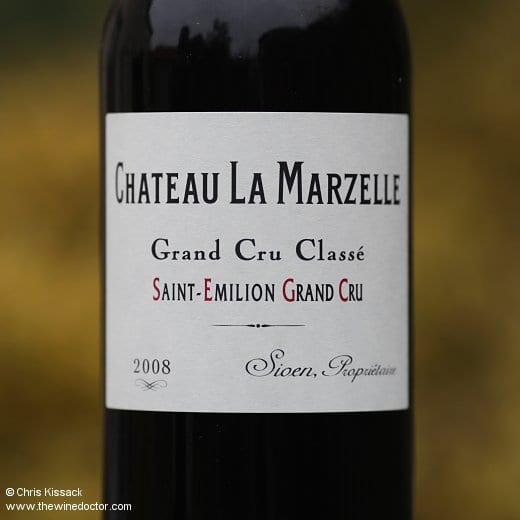Château La Marzelle 2008
The term ‘old’ is not, when it comes to wine, a well-defined one. I remember feeling slightly proud of myself when, after a moment of pre-internet research (yes, I really have been around that long) I grasped for the first time what the term vieilles vignes, occasionally spotted on the labels of wines I was buying, actually meant. It was a few years before my knowledge advanced to the stage where I began to question the term itself. Unlike many aspects of wine labelling in Europe, the term has no legal definition, and so in reality it means little unless you already have a good knowledge of the domaine. One vigneron’s old vines might be 25-years old, whereas his or her neighbour’s vines might be heading for their 60th birthday.
Similarly, we no doubt all have our own opinion about when a wine becomes ‘old’. This was also something I learnt early on in my wine education, some time in the late 1990s, in the early days of wine discussion fora on the internet. I wrote up a tasting of Hermitage and other wines from the 1980s, featuring both Chave and Jaboulet La Chapelle from the 1982 and 1985 vintages. Having posted the notes under the title “Old Rhône Tasting” (or something like that) the first response went along the lines of “Thanks for the notes, but they seem to end in the 1980s. Where are the ‘old’ wines?” I was a fairly novice wine drinker who thought that fifteen-year old Hermitage was getting on a bit, but I soon realised that what to me was ‘old’ was, to another wine drinker, infanticide.

I think most would agree that last week’s 1946 Vouvray Le Haut Lieu from Domaine Huet was ‘old’, although given the fact that Vouvray can age for a century and probably more (especially if helped by a little more residual sugar than my wine had) even this idea can be called into question. But what about this week’s wine? I did promise myself that I would pull more of my ‘older’ Bordeaux from the cellar this year, and I originally had a 1996 lined up (as you can see I am using twenty years or more as a personal definition for ‘old’ at the moment). Unfortunately, cork taint put a swift end to that plan, and this was my back-up bottle. I only bought this a couple of months ago, part of my attempts to get to grips with the full breadth of St Emilion. I’m not touting it as an old bottle, although that is the 2016 version of me speaking. The young student discovering wine in the late-1980s or early-1990s, a decade before Winedoctor was launched, would definitely have though of an eight-year old wine as ‘old’. Perhaps others still do?
A few words on Château La Marzelle first, in lieu of a full profile which I will add during the coming year. The domaine dates to at least the 18th century, at which time it was in the possession of the La Marzelle family. Today it is in the hands of Jacqueline Sioen, who purchased the estate in 1998, and then augmented the vineyard with the acquisition of another 4 hectares in 2003. There was a serious wobble in 2006 when the estate challenged its downgrading in the revised St Emilion classification which was subsequently annulled, and happily for Jacqueline the estate then stayed up in the more recent 2012 revision. Despite this, the estate has remained something of a footnote in the story of St Emilion. Perhaps the decision by the proprietor to bring in Jean-Luc Thunevin, starting with the 2014 vintage, will turn this around. Looking back to the 2008 Château La Marzelle first though, this wine has a dark and concentrated core, with a dusty claretty rim and a little touch of oxblood coming in here. The aromatics are reminiscent of lightly grilled black fruits, with nuances of dry just-ripe blackberry, also chargrilled black plum, all with an overlay of smoke and soot. There is a moderate texture at the start, quite cool and tense though, fresh with plenty of energetic structure and a bright, sour-fruit acidity. It has a nice fruit definition, and a cool substance. Personally I think the most attractive feature is that there is none of the over-done structure or over-ripe fruit that is so common in St Emilion today. Overall this is a good wine, with a nice acid backbone that keeps it working well at the dining table. I suspect, however, looking at the estate’s position yards from Château Figeac and others, that there is untapped potential here. 15.5/20 (14/3/16)
